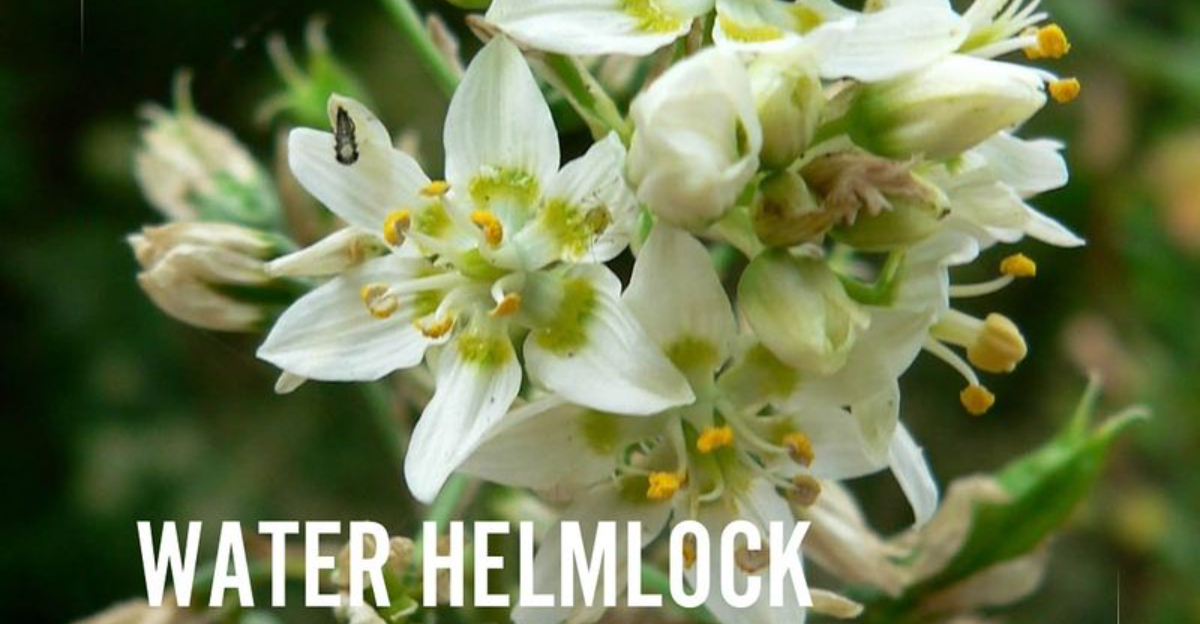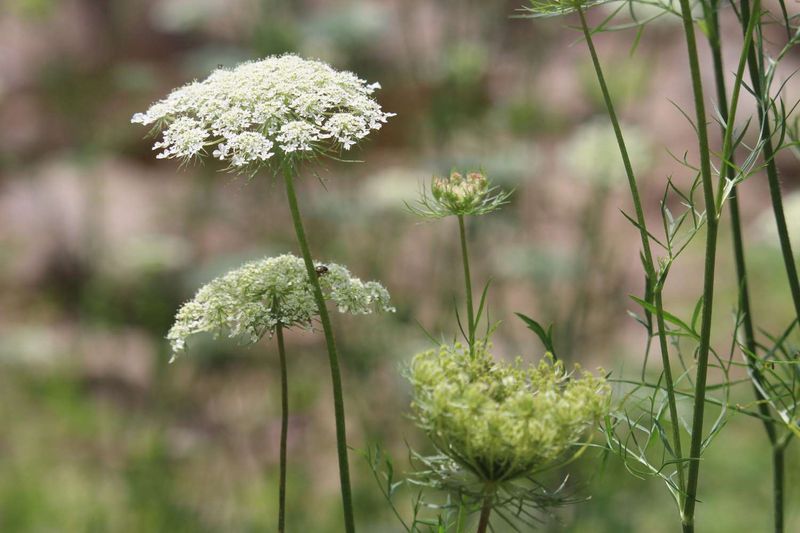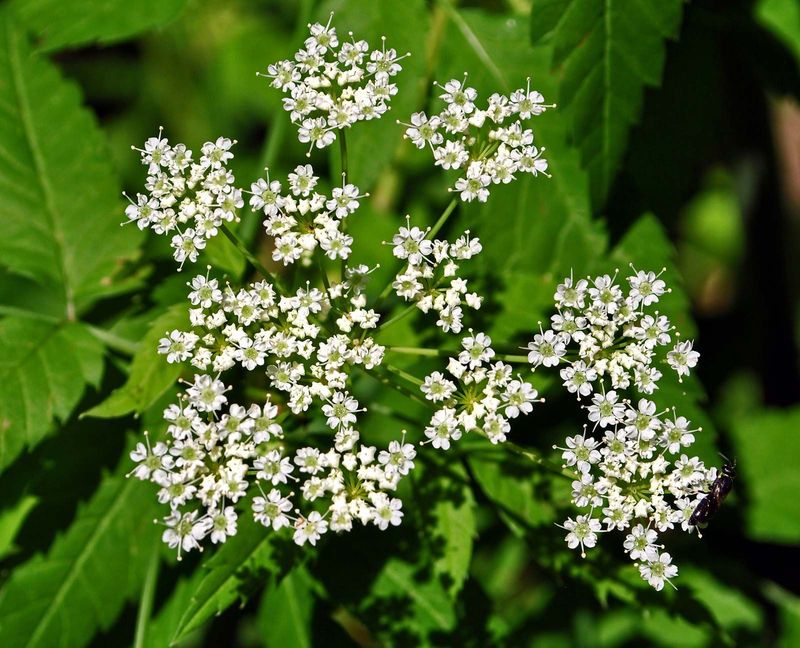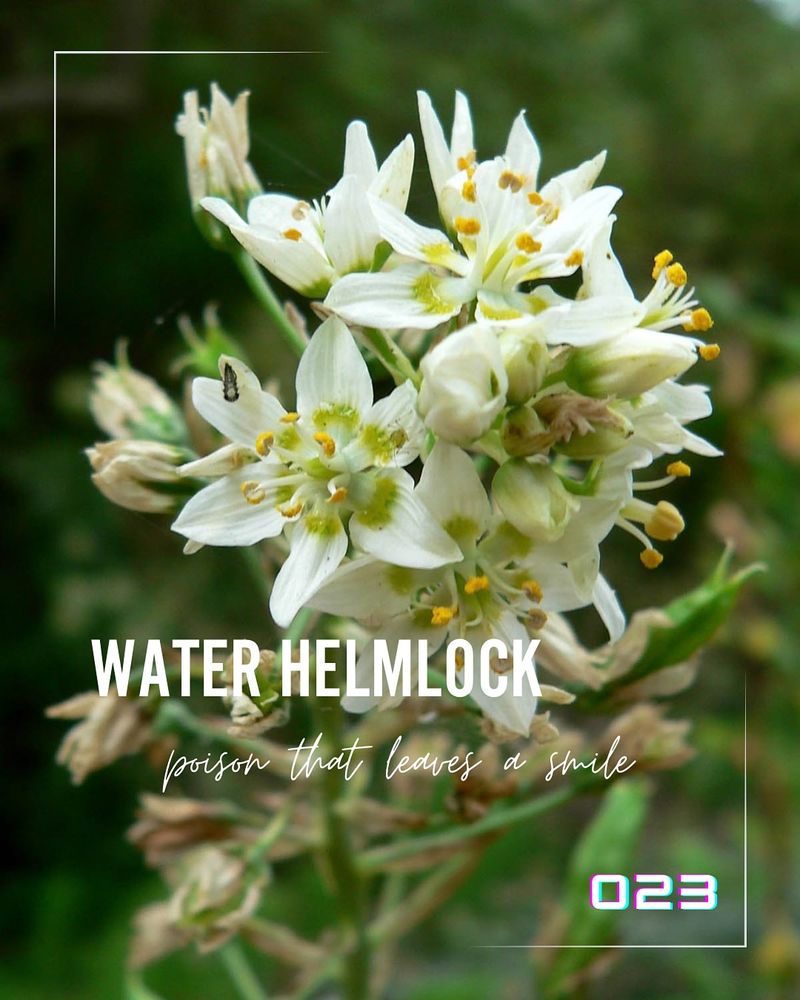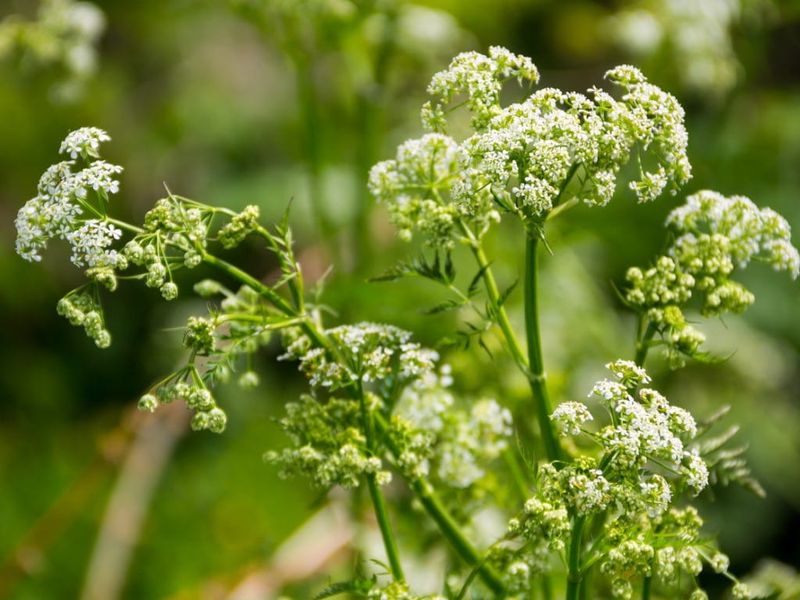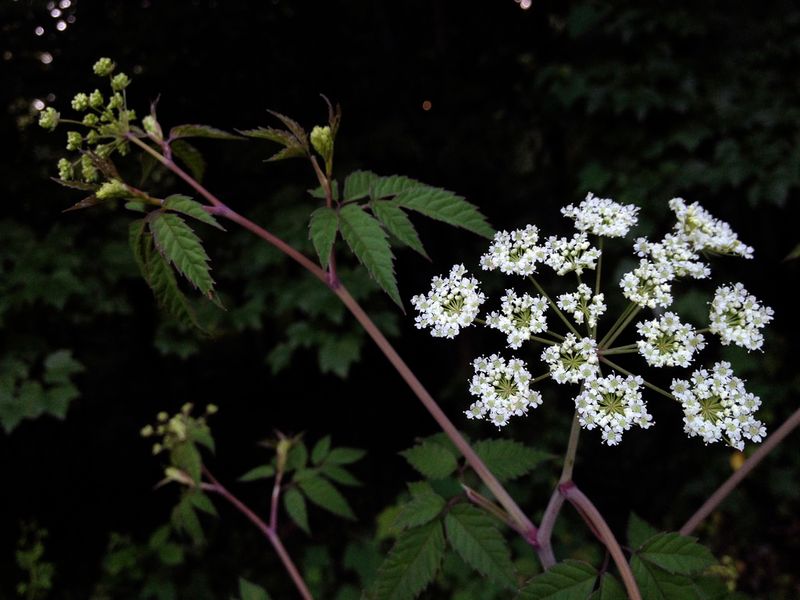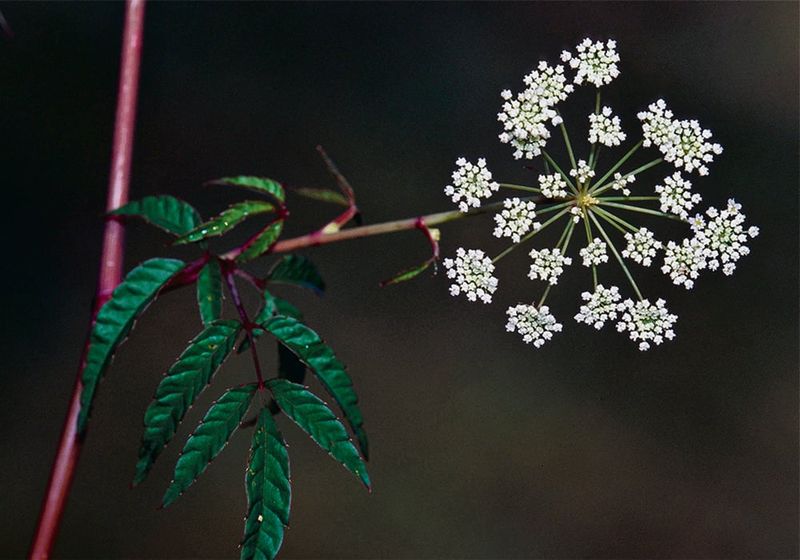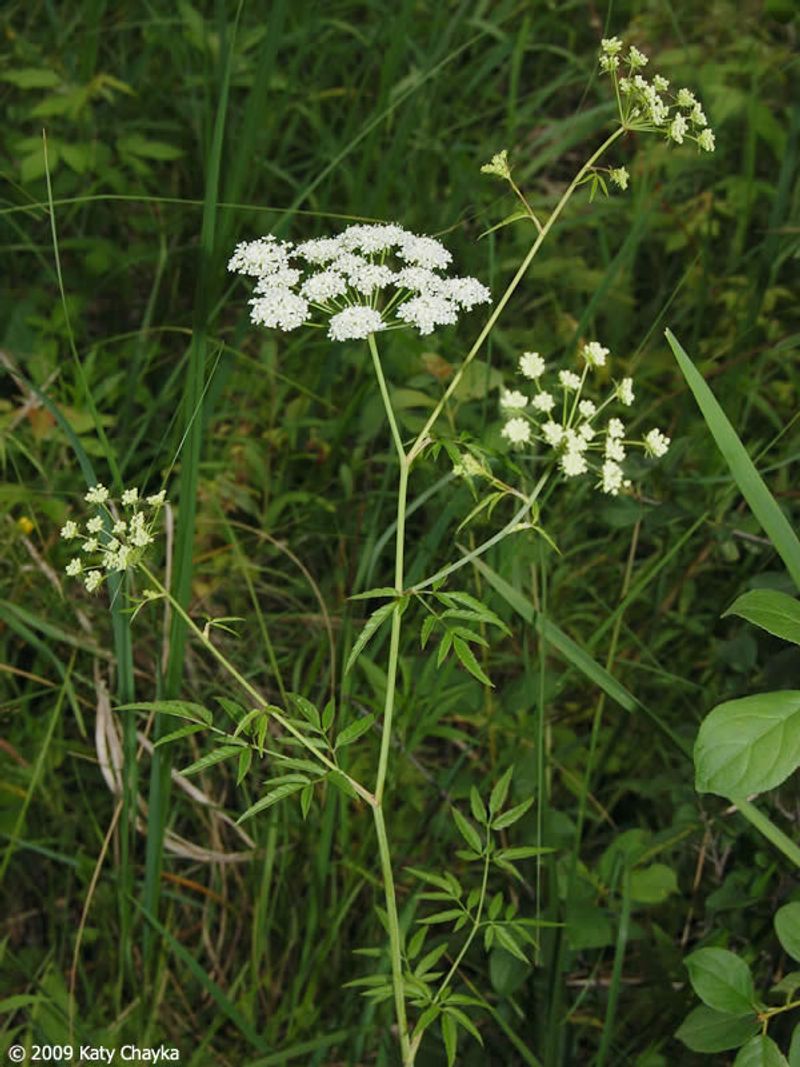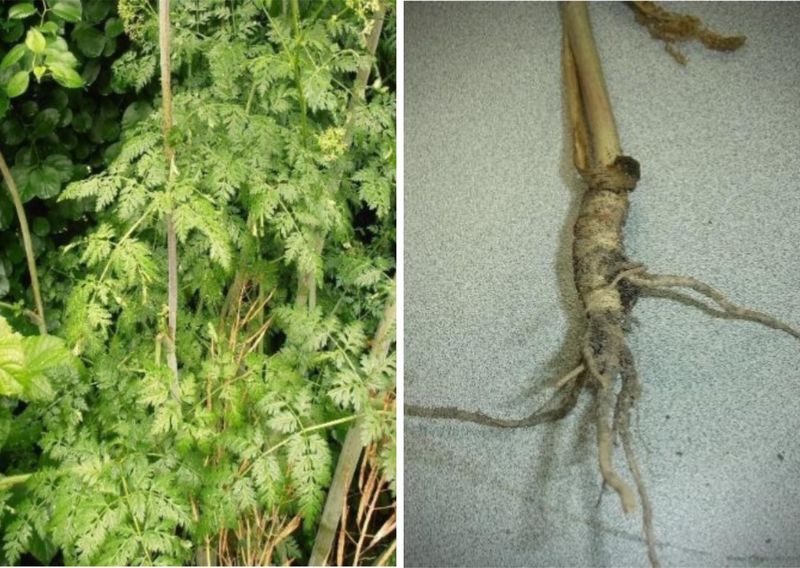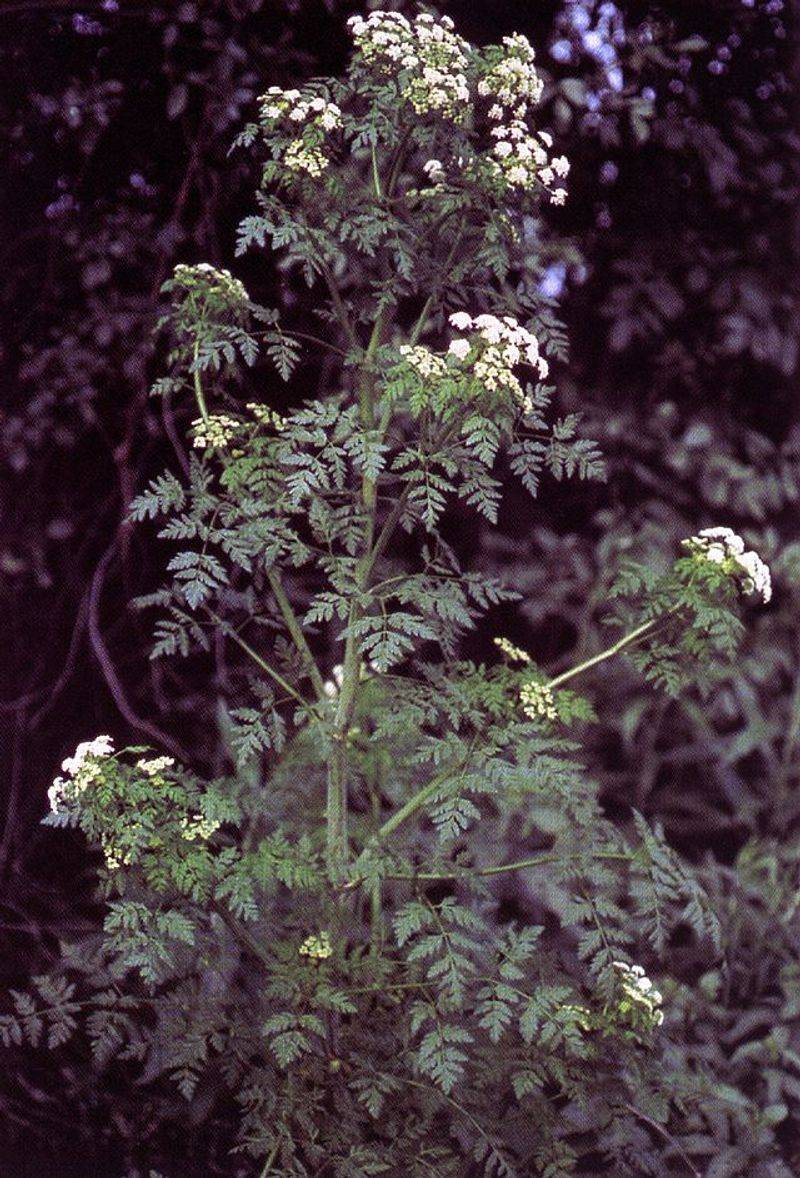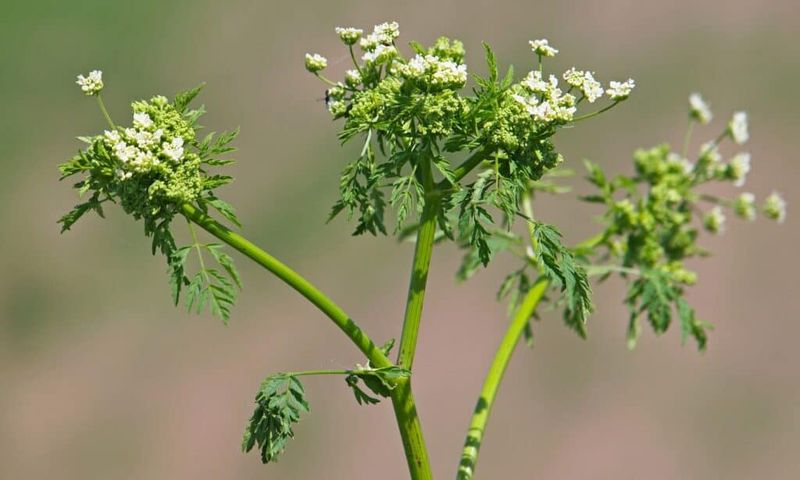Water hemlock is a highly dangerous plant often mistaken for wild carrots. Its resemblance to Queen Anne’s lace or wild parsnip can be misleading due to its umbrella-shaped white flowers.
However, this plant is lethal. Just a small bite can be fatal, particularly for children and small animals. The plant contains cicutoxin, a potent neurotoxin that attacks the brain, leading to violent seizures and can lead to death in mere hours.
Found across North America, especially in wetlands and near water sources, this plant poses a threat to both humans and animals.
1. It Looks Innocent — Like Wild Carrots
Water hemlock’s innocent appearance often leads to mistaken identity. Its white, umbrella-shaped flowers bear a striking resemblance to wild carrots, commonly known as Queen Anne’s lace.
This similarity can easily mislead even the most seasoned foragers. Found in North American fields, the plant’s innocent look masks its lethal nature. Imagine wandering in a meadow, spotting what seems like a harmless wild carrot only to discover its deadly threat.
This confusion highlights the importance of accurate plant identification to avoid accidental poisoning. Its deceptive appearance is truly nature’s dangerous illusion.
2. Just a Small Bite Can Kill You
Even a pea-sized piece of water hemlock root can be fatal. This plant’s toxicity is so high that just a small bite poses serious danger, especially to children and small animals. The root contains concentrated poisons that can lead to severe health consequences rapidly.
Parents and pet owners must exercise caution when near areas where this plant grows. Its lethal nature underscores the need for awareness and education about native plants. Always supervise children and animals in areas where water hemlock might be present to prevent accidental ingestion.
3. Cicutoxin Attacks the Brain
Cicutoxin, the primary toxin in water hemlock, is known for its severe neurological effects. It interferes with the central nervous system, leading to violent seizures. This powerful neurotoxin acts quickly, overwhelming the body’s defenses.
Once ingested, it disrupts normal brain function, causing convulsions and potentially leading to coma or death without prompt medical intervention. Understanding this toxin’s action is crucial, as it explains why water hemlock is so deadly.
The chemical warfare it wages on the brain is a terrifying reminder of nature’s potency.
4. It Acts Fast
The speed at which water hemlock acts is terrifying. Symptoms can manifest within 15 to 60 minutes of ingestion, leaving little time for intervention. This rapid onset often catches victims unprepared, emphasizing the need for immediate medical help.
The toxin works swiftly to affect the body, often leading to dire outcomes without treatment. The urgency of the situation is comparable to a medical emergency where time is of essence.
Knowing the signs and acting fast can make the difference between life and death, highlighting the critical nature of early response.
5. Smells Like Parsnip—But Don’t Be Fooled
The deceptive scent of water hemlock has misled many foragers. The plant’s roots and stems emit an odor reminiscent of parsnip, adding to the risk of misidentification. This alluring scent can attract those familiar with the pleasant smell of edible plants, leading to dangerous consequences.
The olfactory similarity to harmless plants makes water hemlock particularly treacherous for those relying on scent for identification. Recognizing this characteristic can aid in avoiding accidental contact or ingestion, underlining the plant’s cunning disguise in nature.
6. Animals Aren’t Safe Either
Water hemlock presents a significant danger to livestock grazing near water sources. Cattle and other animals are at risk of poisoning when they unknowingly consume this toxic plant. In some unfortunate cases, entire herds have succumbed to its effects. The plant grows in marshy areas, enticing animals with its lush appearance.
Farmers and ranchers must be vigilant and manage grazing areas to protect their animals. Recognizing the plant’s habitat and taking preventive measures can help safeguard livestock, ensuring their health and safety in vulnerable environments.
7. It’s Found Across Most of North America
Water hemlock is widespread across North America, thriving in various habitats. You’ll often find it in wetlands, marshes, ditches, and along riverbanks. Its extensive distribution increases the likelihood of encounters with humans and animals. The plant’s adaptability to different environments makes it a pervasive threat.
With such a broad range, understanding its preferred habitats can aid in identification and avoidance. Whether you’re hiking, foraging, or managing land, being aware of its presence is crucial to ensure safety and prevent accidental poisoning from this dangerous native plant.
8. Roots Are the Most Toxic Part
Among all parts of water hemlock, the roots are the deadliest. They contain the highest concentration of poison, making them especially dangerous. Unfortunately, these roots are often mistaken for edible tubers due to their appearance.
This misidentification has led to numerous poisonings. Recognizing the root’s appearance and understanding its risk is vital for safety. Foragers and outdoor enthusiasts should exercise extreme caution.
Proper education and awareness about the plant’s root system can prevent tragic mistakes, emphasizing the need for vigilance when exploring natural landscapes.
9. There’s No Antidote
Water hemlock’s toxicity is compounded by the absence of an antidote. Treatment is limited to symptom management, focusing on preventing respiratory failure and seizures. The lack of specific treatment options highlights the urgency for immediate medical intervention upon exposure.
Recovery from poisoning is rare and requires rapid, intensive care. This reality stresses the importance of awareness and prevention. Understanding the plant’s dangers and knowing how to respond is critical. In the event of exposure, seeking medical help swiftly can make a crucial difference.
10. It’s in the Same Family as Carrots and Celery
Water hemlock belongs to the Apiaceae family, which includes familiar vegetables like carrots and celery. However, this deadly relative is nothing like its benign cousins. The shared family characteristics contribute to its common misidentification.
Despite its toxic nature, the plant’s appearance can deceive those familiar with the edible members of its family. Recognizing this botanical relationship can aid in distinguishing it from safe plants.
Knowledge of family traits and careful observation are key in preventing accidental ingestion, ensuring safer identification practices.
